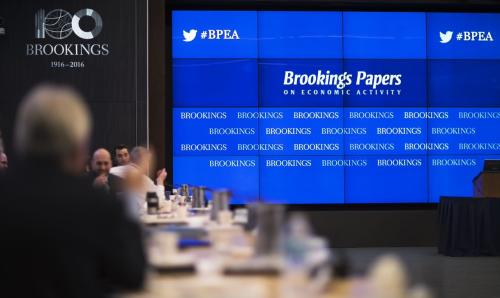

Research
BPEA | Fall 2007Fall 2007
TWO THOUSAND AND SEVEN may seem an odd moment to question what
we know about monetary policy. The past quarter-century has been about
as good a run, at least in aggregate dimensions, as one is likely to get—
and certainly far superior to what the early Brookings Panel participants,
in the 1970s, ever thought likely. The United States has experienced only
two business recessions during the last twenty-five years, neither lasting
longer than eight months and neither involving a decline in total production
as great as 11_2 percent.1 Annual price inflation has converged onto a
11_2 to 2 percent norm, with the average increase apart from food and
energy (the U.S. central bank’s preferred measure) falling exactly in the
middle of this range over the past ten years and not a single year as much
as 1_4 percentage point either above or below. Neither the severe one-day
stock market crash in October 1987, nor the collapse of a good portion of
the nation’s thrift deposit industry in the late 1980s, nor the protracted
stock market decline of 2000–03, nor the quadrupling of world oil prices
since 2002 had much, if any, visible impact on either aggregate nonfinancial
economic activity or economy-wide inflation. Euroland and most of
the world’s other advanced economies have enjoyed similarly favorable
rides, and even the one outstanding exception—Japan—proves the rule, in
that monetary policy there was so plainly wrong-headed.